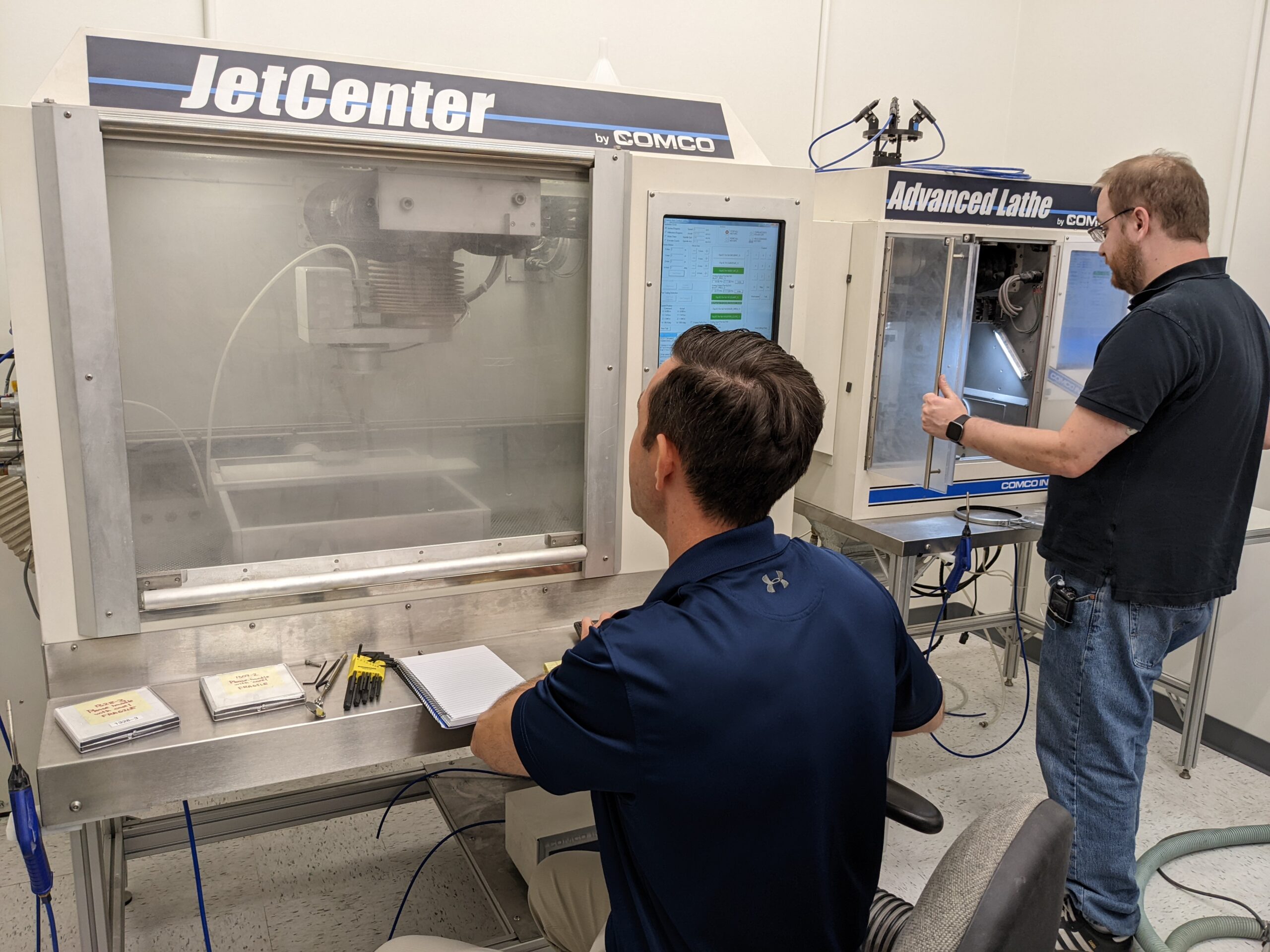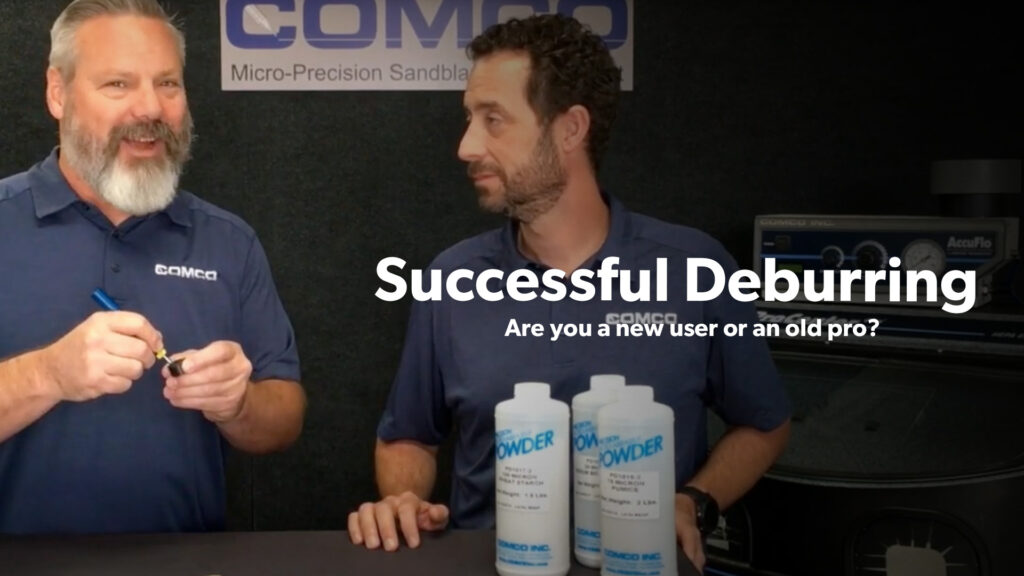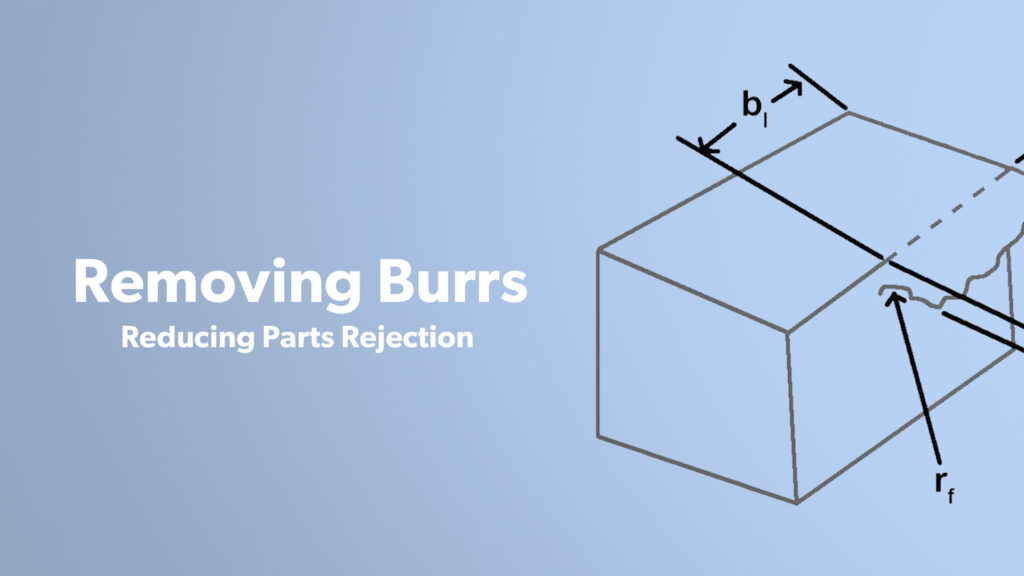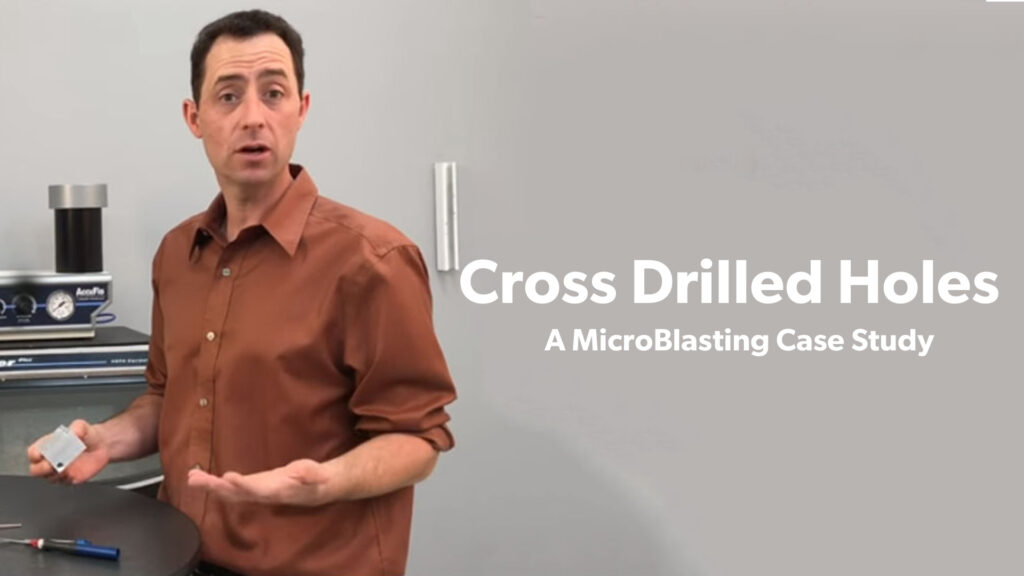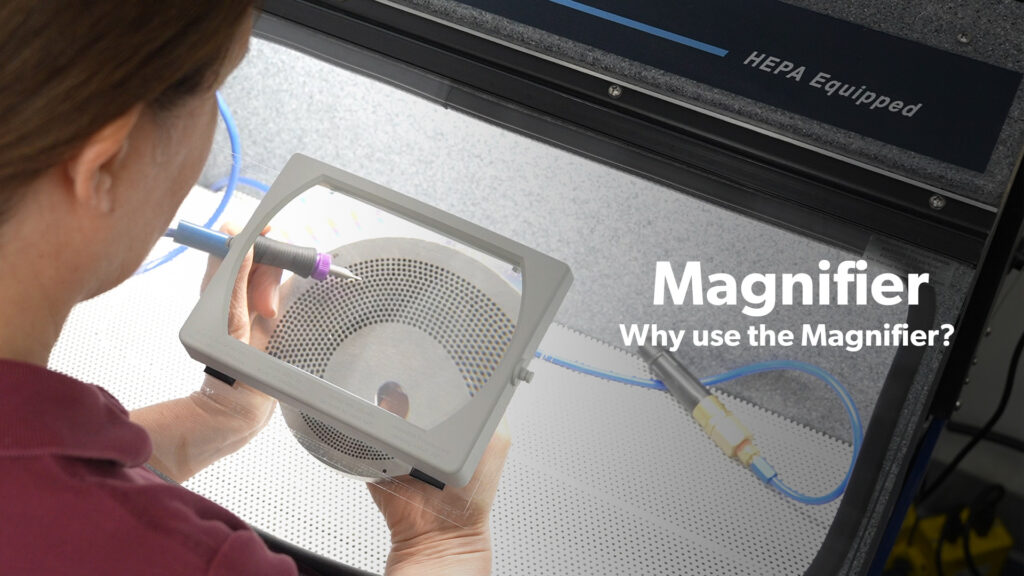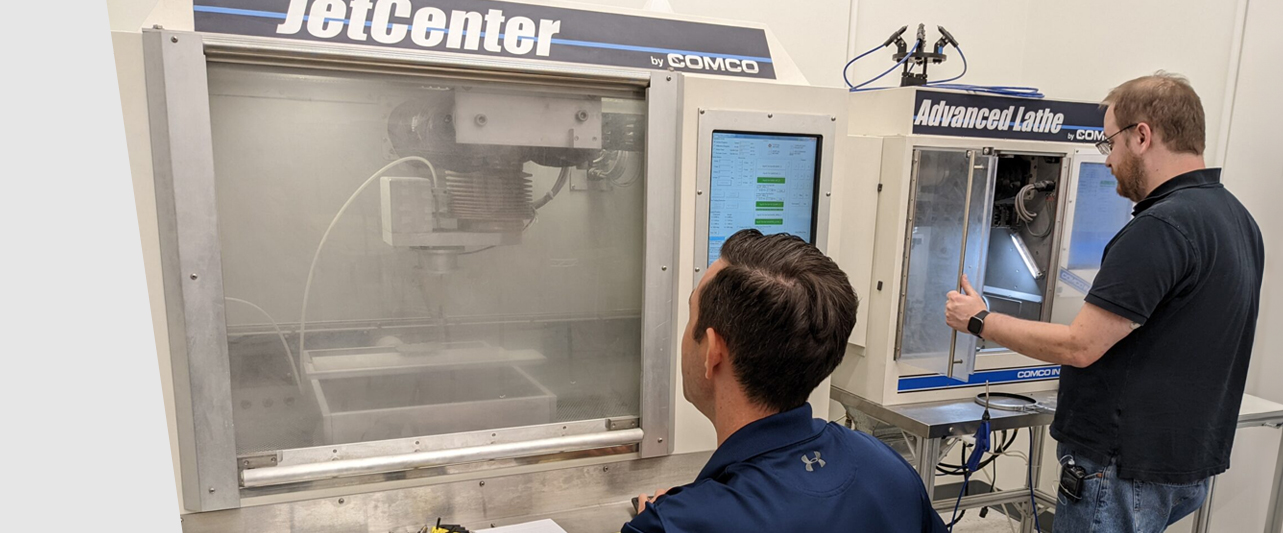Case Studies
Deburring with Glass Bead
MicroBlasting provides an efficient method for burr removal on small, delicate parts with intricate geometries. The different abrasive used in MicroBlasting make it a versatile process. There isn’t a go-to choice when it comes to deburring whether the base material is metal or plastic. The unique properties of each abrasive make it effective for different base materials and desired results.
When is glass bead recommended?
The type and size of the burr, base material and desired surface finish are just a few of the considerations when choosing an abrasive. Glass bead is ideal for applications with these conditions:
• Surface finish is critical – Glass bead will leave a satin finish instead of the matte finish created with cutting abrasives.- • The root of the burr is brittle – We rely on the energy of the abrasive particle to fracture the root rather than to cut through it. This is a common feature of fine rollover burrs.
- • Minimal edge break – Glass bead will impact the sharp edges, but only slightly.
- • The base material is harder – Machining a harder base material like stainless steel or titanium more often results in those brittle burrs that glass bead can easily snap off at the root.
- • Applications with fluidic properties – Glass bead creates smoother transitions improving flow through the part.
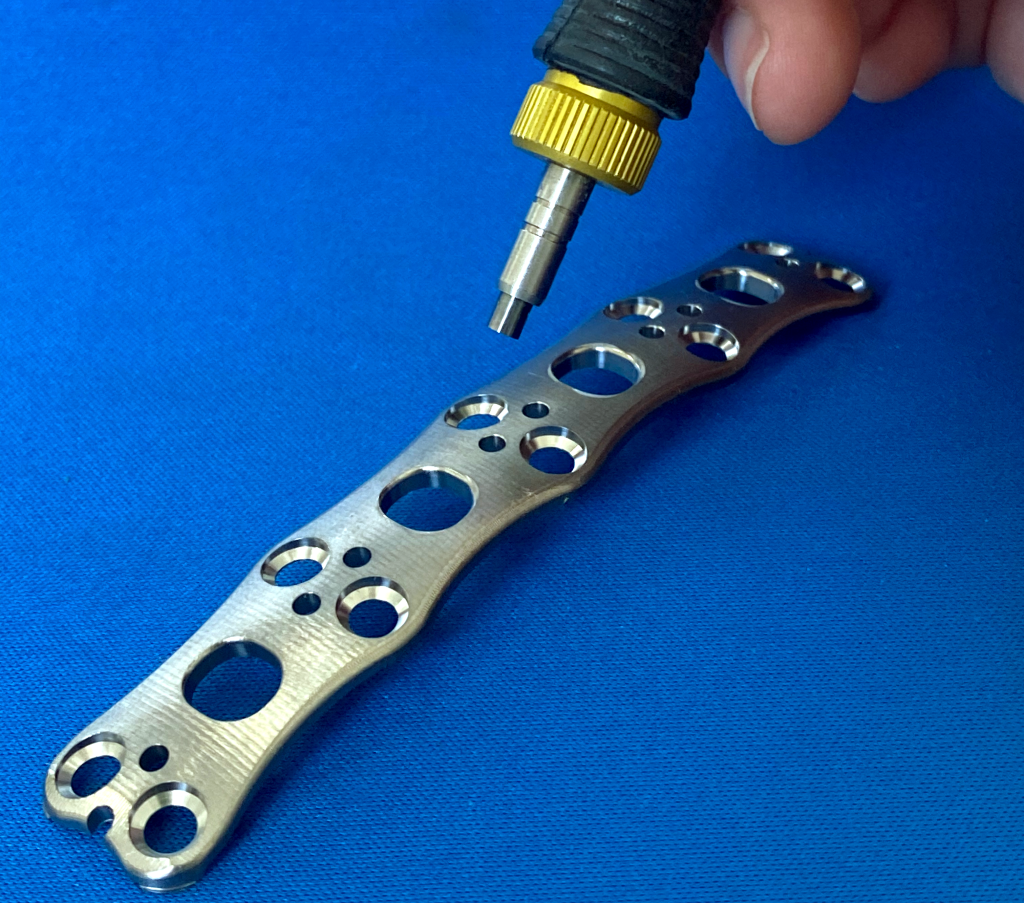
Example 1: Deburring metal bone plates
- Nozzle: 0.046″ Hi/Performance
- Air Pressure: 70 psi
- Abrasive Type: 35µ Glass bead
The machining process often leaves small feather burrs that need to be removed. Glass bead peens the surface knocking off the burrs without damaging the integrity of the part. It also removes the machining marks, creating a desirable satin finish.
A smooth surface finish is required when using bone plates to set a broken bone.
Example 2: Deburring Spray Nozzles
- Nozzle: 0.018″ Hi/Performance
- Air Pressure: 60 psi
- Abrasive Type: 35µ Glass bead
Though the smallest burrs may be invisible to the naked eye without magnification, that doesn’t mean they don’t have a big impact. Tiny burrs on spray nozzles impede the flow through them and must be removed. Glass bead minimizes changes to the part’s finish compared to cutting abrasives like aluminum oxide or pumice. MicroBlasting with glass bead breaks the edges of the part, which is beneficial in this application.

Enhanced Viewing with the Magnifier
- • Provides 3x magnification, which reduces eyestrain and allows comfortable work on small and intricate parts.
- • Provides 8-10″ depth of focus, which allows parts to be held at a distance from the WorkStation window for unencumbered movement while blasting.
- • Mounts easily with VELCRO tape strips for simple removal and reattachment.
Applications Lab
Let our experts help find the right solution for your part. We know no two applications are the same, even if it’s deburring the same base material. Our Technical Specialists manage sample-part testing and processing from start-to-finish. They actively collaborate with our Sales and Engineering Teams while remaining completely accessible to you throughout the process.
